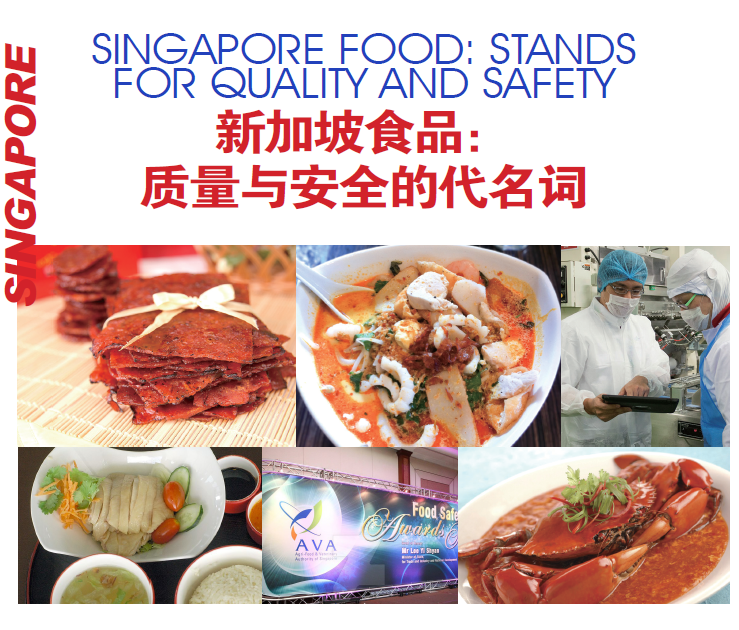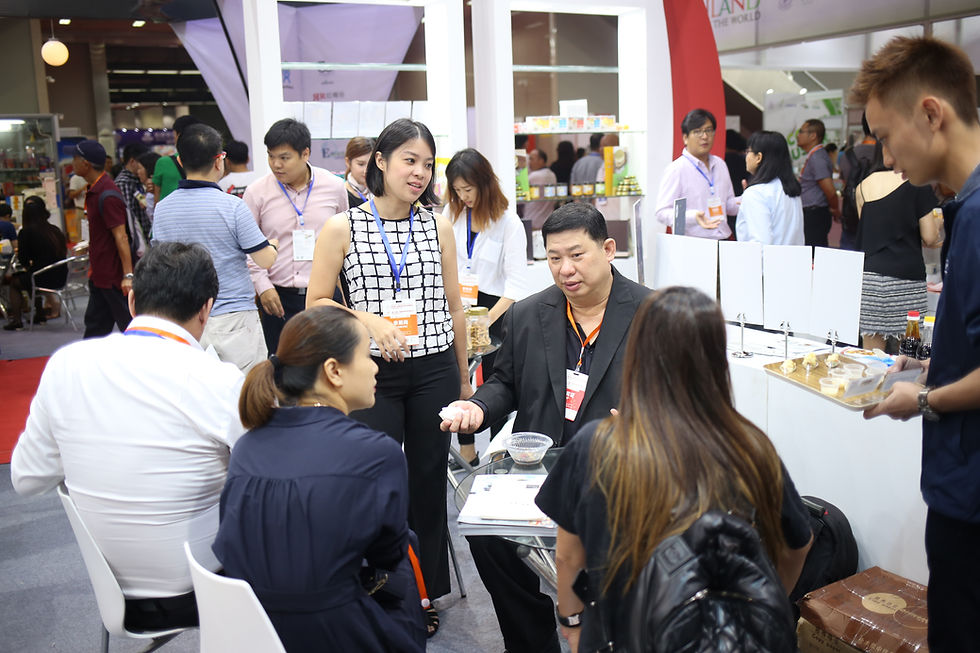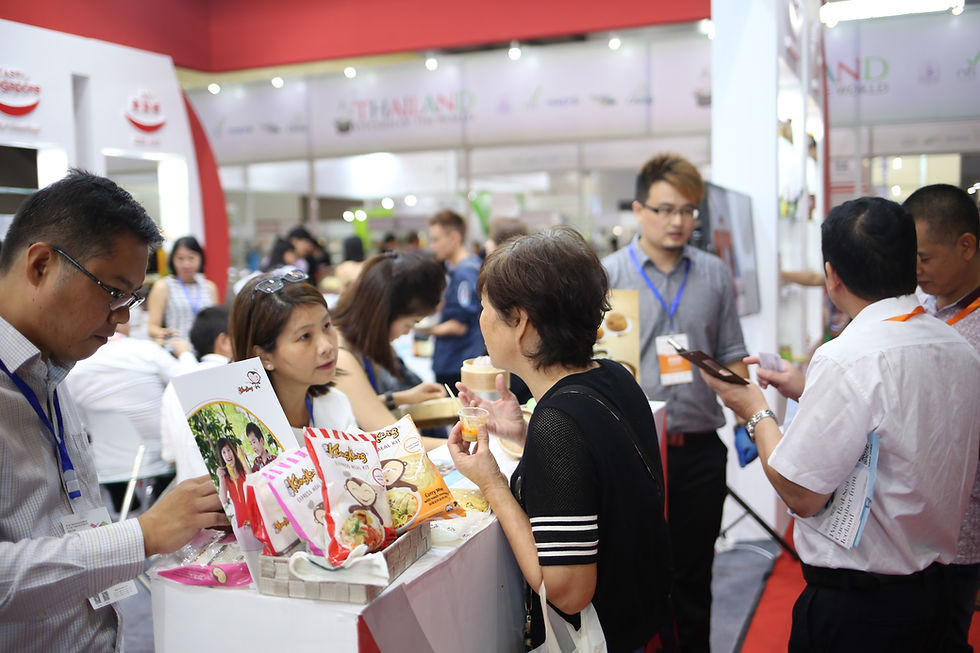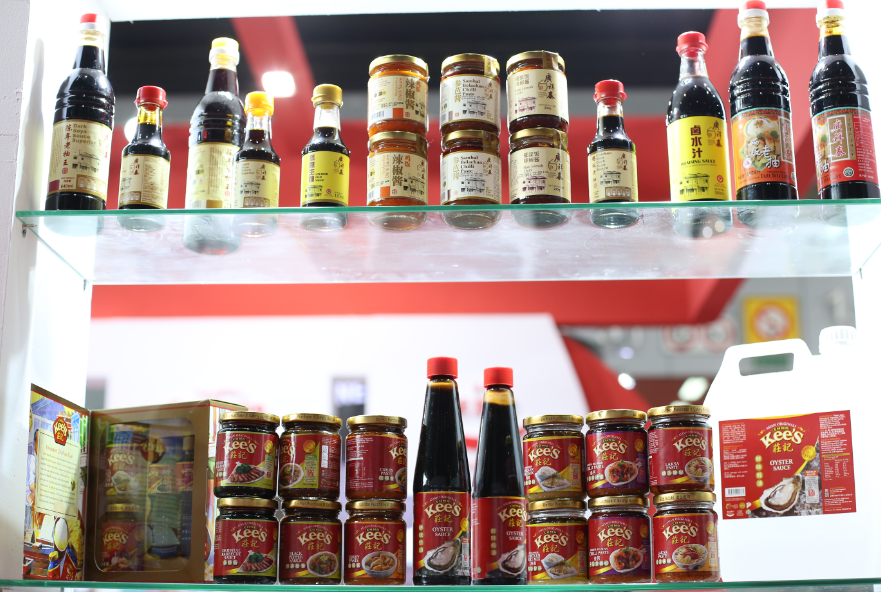Singapore Manufacturing Federation appears at FHW CHINA 2017, Deputy President says “transparency of
- worldexsingex
- Oct 18, 2017
- 7 min read
FHW | Powered by FOOD2CHINA, which was held on September 8-10, has achieved an unprecedented success! One of the highlights of the fair was the Singapore Pavilion organized by Singapore Manufacturing Federation (SMF) which consisted of 18 high quality Singapore suppliers. This is the first time that SMF has taken part in an exhibition held in South China, which is of milestone significance. Singapore food is undoubtedly one of the most competitive and attractive options for Chinese consumers who are increasingly concerned with food safety issues!

Due to Singapore government’s strict monitoring of food quality and a full range of intelligent management measures, its food is world-renowned for its quality and safety. Singapore Manufacturing Federation (SMF), as the leader of Singapore manufacturing industry and maker of industry standards, has been committed to promoting Singapore food industry to achieve standardization and modernization and go global. However, in recent years, Singapore’s food export to China has been declining.

Singapore’s food manufacturers yearn for this huge attractive market, but feel discouraged at the same time. What are the reasons behind this? As is pointed out by Mr. Sunny Koh, SMF Deputy President and Chairman of Food and Beverage Industry Group, during our interview, more transparent trade policies are the key to introducing more quality Singapore foods to the China market.

What are the main functions of SMF and its role in Singapore’s import and export?
SMF has ten industry groups, one of which is Food and Beverage Industry Group. The Federation has more than 3,000 members, most of whom are from the manufacturing industry, while its Secretariat has more than 125 full-time employees. The major role of SMF is to implement national policies. We represent the Singapore government to help administer industry standards. The Standard Development Organization (SDO) of SMF oversees the development, promotion and implementation of standards to meet the needs of the industry and regulators.

In addition to setting industry standards, we also help Singapore’s SMEs to further grow and improve themselves, improve their products, and seek government funding. One of our strategies is to help Singapore SMEs go international. In 2010 we created a one-stop procurement platform, so that overseas buyers or businesses can go directly to our website to pick products they want, including frozen, chilled and dried goods. The establishment of this one-stop platform is a response to the emergence of online platforms which pose great challenges to traditional modes of operation. The biggest problem facing the retail industry is that products bought online are cheaper, showing a great competitive advantage. The only way for the retail industry to transform is to employ direct sourcing, namely cutting off unnecessary intermediate links. In this way, businesses can not only gain reasonable profits, but also reduce retail prices to those of the online platforms, which benefits consumers. Of course, consumers will return to physical stores when online platforms grow to a certain stage. Because when people’s spending power rises, they will pursue not bargains, but tangible product quality. So, we have set up this one-stop platform to provide help for Singapore’s SMEs looking to go abroad.

According to data from media survey, in the past two years, the export of other Singapore products to China showed rapid growth, while that of foods slowed down. What do you think are the reasons behind this phenomenon?
It was relatively easy to do import and export businesses when China did not achieve zero tariffs on imported goods from Singapore. I believe at that time most of our products could be exported to many countries as long as we pay tariffs. However, after implementing zero tariffs, many countries set up “non-tariff barriers”. In fact, non-tariff barriers have increased by almost three times over the past few years. What’s more, many ASEAN countries frequently changed their leaders in recent years. New leaders will introduce new policies, resulting in frequent changes in foreign trade policies. China still has a lot of non-tariff barriers. Sometimes, it is not so easy for Singapore’s SMEs to understand these situations. Although Singapore has realized free trade with China, with most products enjoying zero tariffs, once the products reach China Customs, a tax may be levied on some products in spot check. Even if there is no tax levied in the spot check, the products need to go through procedures of Entry-Exit Inspection and Quarantine of the People’s Republic of China (CIQ). Besides, the same CIQ policy may be interpreted differently in different ports. For example, the same packaging can pass the CIQ in Guangzhou but may fail in Dalian and Shanghai. For many SMEs in Singapore, these obstacles are neither easy to understand nor within their capacity to solve. If problems occur and products cannot pass CIQ clearance, businesses have to destroy it or ship it back. In this case businesses do not make money, but incurred a lot cost, which is the reason why a lot of food companies feel discouraged toward the China market. Before realizing real free trade, there are a lot of issues to be solved.

Does the One Belt One Road initiative help change this situation? What opportunities and benefits will it bring to Singapore’s food manufacturers?
This depends on how China solves these problems. No one has the ability to solve them except the Chinese government. We can only do what we should. From SMF’s standpoint, we can ensure product quality and safety as well as the legitimacy of production and management. I believe that most Singapore businessmen act according to the rules and do not follow illegal paths. But if the policies are not transparent enough with the implementation being different from the policies themselves, people may not dare enter the market.

To be frank, China market is definitely the one that everyone wants to enter. Although the Europeans have a vastly different food culture, they also yearn for the China market. Singapore has the same food culture with China. Things we make, eat and use are similar. Everyone is fully aware of how big the market in China is. But the problem is that at present, not everyone has the ability to enter China market, and is not because our products are not up to standard. The real reasons lie in Chinese policies, including customs clearance and commodity inspection.

Now foods from many countries are entering the China market. What do you think are the advantages of Singapore foods?
Now a lot of Singapore products exported to China enjoy zero tariffs, which is one of the most obvious advantages. Another one is that the Singapore government has for many years been encouraging enterprises to improve productivity and achieve automation, and so far we have witnessed many successes. Take CHINATOWN glutinous rice balls produced by us as an example. For more than 20 years, our export price of this product did not rise. Why can our export price remain unchanged while the price of raw materials almost rose four to five times and the average wage of workers doubled? The reason is that we have achieved automation and improved productivity to make up for the rise of raw material price. In 1992 when we first entered China, our price of glutinous rice balls was three times higher than the average price in China, and now is only about 20-30% higher.

Last year I heard an expert in France say that in a few years, French-made products may be cheaper than those made in China. In addition, the quality and safety of Singapore food are absolutely competitive compared with those of other countries. Our food manufacturing certificate is divided into four grades A, B, C and D, among which A is the top one. A company will obtain a bronze medal issued by Singapore Agri-Food and Veterinary Authority (AVA) as a certification and reward, if it has been rated as level A for five consecutive years; a silver medal for ten consecutive years; a gold medal for fifteen consecutive years and a platinum medal for twenty consecutive years. The first batch of grade A certificates were presented by AVA in 1995, which is 22 years from this year. An enterprise can maintain the A level rating only if there were no food safety incident within these 22 years. In the event of an incident, it has to start from scratch. At present, only 23 foodcompanies in Singapore received AVA awarded platinum medals, including CHINATOWN.
Singapore’s food safety is well known worldwide. The country has been listed in the top three of “The Global Food Safety Index” initiated by Economist Intelligence Unit for two consecutive years. It is also the only country in Asia that has been included in the top three. Can you please tell us what are the main procedures of Singapore’s food safety supervision?
I often tell overseas procurement staff that Singapore as a small country has to import all the raw materials, which has its advantage, namely strict check on imported materials by AVA. Raw materials have to pass the check of AVA before entering Singapore. Foreign raw materials such as peanuts have to go through the sampled inspection of AVA before being used by factories. Once some products are found unqualified,that can only be shipped back or destroyed. It is such an overall environment that ensures the safety of Singapore food manufacturing links. Many other countries have farmlands or farms, so manufacturers can directly purchase raw materials from farmers, making it difficult to set standards. In fact, I often tell people that no matter how many policies or management laws and regulations a country enacts, the most important thing in food industry is the conscience of operators: Dare you let your family eat the food you produce? If not, why sell them to others? There are many major problems in China’s current food safety, as the country is too big and finds it difficult to impose strict supervision on everything.

According to your best knowledge, what are currently best-selling Singapore foods in the China market?
Best-selling products exported to China in the early period included soy sauce and sauces as well as instant noodles. Now frozen foods are also selling well, such as CHINATOWN glutinous rice balls. CHINATOWN glutinous rice balls entered the China market in 1993, were then available in Wal-Mart in Shenzhen as well as Guangzhou and Shanghai, and will be sold in Wuhan later. Now, where there are Chinese across the world, there are CHINATOWN glutinous rice balls. The product is even exported to the United Kingdom, Europe, Australia, and South Africa. As a food manufacturing industry, we hope that countries we export products to have transparent policies, which is beneficial for both businessmen and consumers. People can enjoy quality but affordable products.


Comments